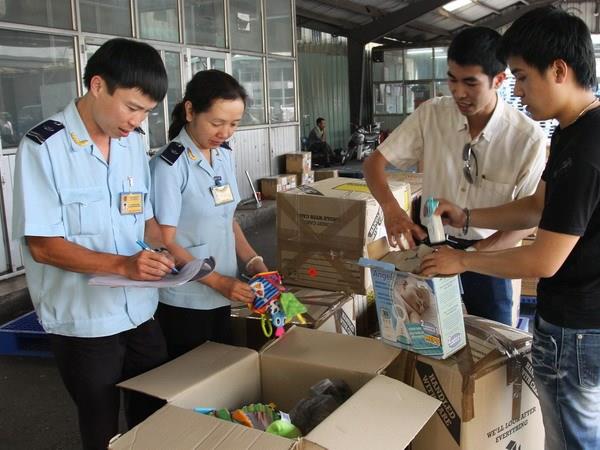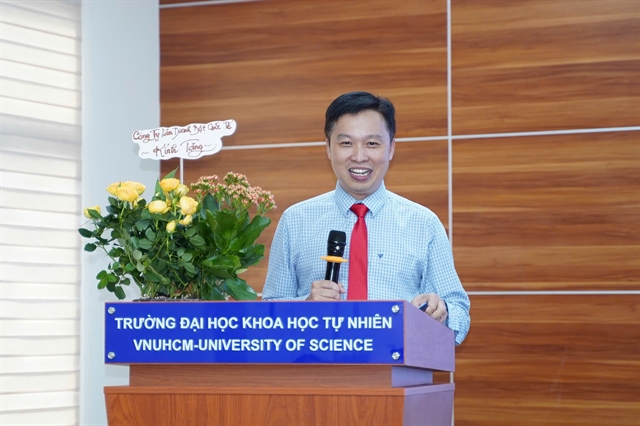 Opinion
Opinion

The success of the national single window system and the automated customs supervision management system at Nội Bài International Airport has brought practical benefits to the customs authorities and the business community, opening the era of strong digital transformation in the customs sector.

|
| Customs officials check imported goods at Hà Nội's Nội Bài International Airport. VNA/VNS Photo |
The success of the national single window system and the automated customs supervision management system at Nội Bài International Airport has brought practical benefits to the customs authorities and the business community, opening the era of strong digital transformation in the customs sector.
Phạm Duyên Phương, deputy director of the General Department of Vietnam Customs’ Department of Information Technology and Customs Statistics spoke with Vietnam Financial Times online newspaper about the pilot results of the mechanism and plans to apply the systems at airports nationwide.
What benefits have the single window and automated customs supervision system been providing to customs authorities and businesses during its pilot period at Nội Bài International Airport?
After more than two years of implementing the Ministry of Finance’s Decision No 1475 issued on September 28, 2020, the customs management and the operation of Government agencies and enterprises have seen a positive transformation.
Previously, import and export procedures were carried out manually, leading to many limitations such as high cost and time-consuming procedures. Information sent to management agencies and customs offices is not prompt, leading to delays in administrative procedures implementation. Customs authorities took time to check and verify the reliability through paper documents.
As a result, administrative costs of customs management increase as it takes a high number of human resources to do the job. In addition, due to the low reliability of paper documents, it takes a long time for customs authorities to verify and slows down the clearance time.
After applying the new system, we have received positive feedback from import and export enterprises because the costs of logistics and import and export are reduced and customs clearance is fast.
The application of modern methods has created opportunities for logistics enterprises to improve service quality and attract more customers, improve their position and competitiveness and integrate more deeply into the international supply chain.
Due to timely and reliable sources of information, customs can apply modern technologies, focus on controlling risk issues, and analysing and assessing risk management.
According to the Nội Bài International Airport’s Border Gate Customs, all airlines have sent information to the National Single Window. The automatic monitoring management system has connected all warehouses at Nội Bài International Airport. On average, more than 5,300 shipments are processed every day, and all are managed and monitored through the system. The time for inspection, supervision and clearance of each shipment is reduced from 3 to 6 hours to an average of less than 10 minutes.
There are comments from the business community about some problems in the goods declaration process in the new systems such as congested information technology systems, affecting the customs clearance process. How does the General Department of Customs solve this problem?
We have noticed some issues that need to be solved to improve service quality.
Firstly, in terms of legal regulations, we believe the procedures have received high appreciation from businesses and government agencies. However, there are still many points that need to be revised to better serve businesses and ensure a higher level of reliability. It will also help ensure the synchronous connection between import and export agencies, and smooth transit and entry-level goods management.
Technically, we see that there are shortcomings in the operation of the information technology system.
Another issue is human resources. Aviation activities require fast cargo rotation and flights are carried out all day and night, so are support activities. This is a difficult task, requiring the customs authority to arrange a team of civil servants on duty around-the-clock to ensure the timely handling of problems of enterprises and airlines.
To overcome the above limitations, the General Department of Customs is implementing a project to rebuild the information technology system, and implement digital customs towards a smart customs model to keep up with international standards.
Could you tell us about plans to apply the systems at all airports nationwide?
The National Single Window System and the Automatic Customs Supervision and Management System have been deployed at HCM City’s Tân Sơn Nhất International Airport after their success at Hà Nội’s Nội Bài International Airport.
We have learned experiences from two years of implementation at Nội Bài Airport and continued to have seminars with businesses and related agencies to get experience at Tân Sơn Nhất Airport.
Based on this experience, we will have plans to expand the systems nationwide in the near future. – VNS




